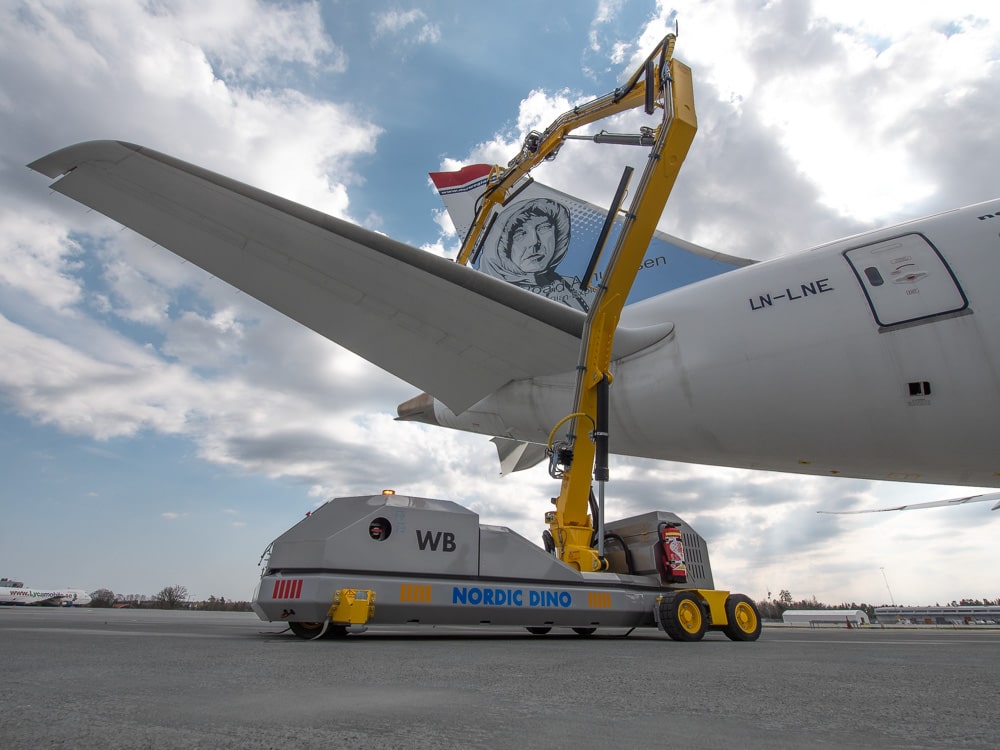Health and safety concerns of aircraft exterior cleaning could be curbed with an already-existing alternative
 A number of airlines, maintenance, repair and overhaul (MRO) service providers, and companies involved in direct aircraft operations have all been affected by the staff shortages rippling through the aviation industry. With the lack of trained professionals, processes like aircraft exterior washing especially, have been struggling to find enough people that could perform aircraft exterior cleaning. One of the main concerns arising – ensuring the health and safety of those, working with chemical detergents, and dangerous equipment.
A number of airlines, maintenance, repair and overhaul (MRO) service providers, and companies involved in direct aircraft operations have all been affected by the staff shortages rippling through the aviation industry. With the lack of trained professionals, processes like aircraft exterior washing especially, have been struggling to find enough people that could perform aircraft exterior cleaning. One of the main concerns arising – ensuring the health and safety of those, working with chemical detergents, and dangerous equipment.
With the way aircraft are usually washed – the so-called traditional way – the process is itself bears pretty high hazard risks, simply from the nature of it. To properly clean an aircraft’s fuselage a sizeable team of professionals have to use large equipment like scissor lifts and scaffolding, telescope mops, work with pressurised water, as well as chemicals and detergents. Jan Brunstedt, CEO of Aviator Robotics AB and the creator of Nordic Dino, the leading aircraft exterior cleaning robot, notes that even if detergents used to wash the fuselage are environmentally friendly, there is still a risk of injury.
“The process of aircraft exterior washing, especially if airlines and MROs are still using the traditional method, is unavoidably risky for those, performing the task. Especially, if the people working on it have not been properly trained to do so. Most injuries happen right on the ground when someone simply slips on the washed off detergent on the floor. Others, more extreme ones, happen by using equipment like scissor lifts, for example. And this has become a more pressing issue, since the trained or experienced candidate pool for these jobs is very limited, and people that are hired had not had proper training to complete these tasks. Not to mention maintaining the quality of the wash without damaging the aircraft itself.”
Airlines and MROs have been looking at ways to solve this predicament that would thoroughly ensure the health and safety aspect of the professionals. Brunstedt notes that the answer to this lies in the washing methods rather than anything else.
“There is truly no need for the service providers to be somersaulting to find solutions. Instead of using the traditional method, which inherently brings more risks, the alternative – semi-automatic exterior washing robots – has proven to be the answer for these issues they face. When it comes to semi-automatic washing robots, instead of needing, say, 16 people to service the aircraft, you have one trained professional with a remote that conducts the wash through the robot from a safe 10-metre distance. This method also cuts out any potential damage done to the aircraft’s sensors and the aircraft itself during the manual wash. Semi-automatic robots, like the ones we offer, curb health and safety risks from the washing process that is a mandatory part of an aircraft’s maintenance.”
As the trained professionals are in high demand in the aviation industry at the moment, airlines and MROs have been on the lookout for solutions to the ongoing woes and ensuring the health and safety of the professionals working on important processes like the aircraft exterior washing. But with the solutions such as semi-automatic washing robots already available, it seems that the issues could be solved easier than first anticipated.
